I'm switching from my full-frame Nikon DSLR to micro four thirds mirrorless.
After my wife got her new camera three weeks ago I've had a lot of time to play with the Olympus camera system. We sold off a bunch of gear to pay for Cathy's camera. I kept on playing with it. I started selling off more gear and didn't stop until I was able to afford this camera body and an adapter to allow the use of my Nikon prime lenses.
Olympus OM-D EM-5 Mk II with K&R Concept adapter and Nikon 24mm f/2.8 lens. Next to the camera is my trusty Nikon 50mm f/1.8.
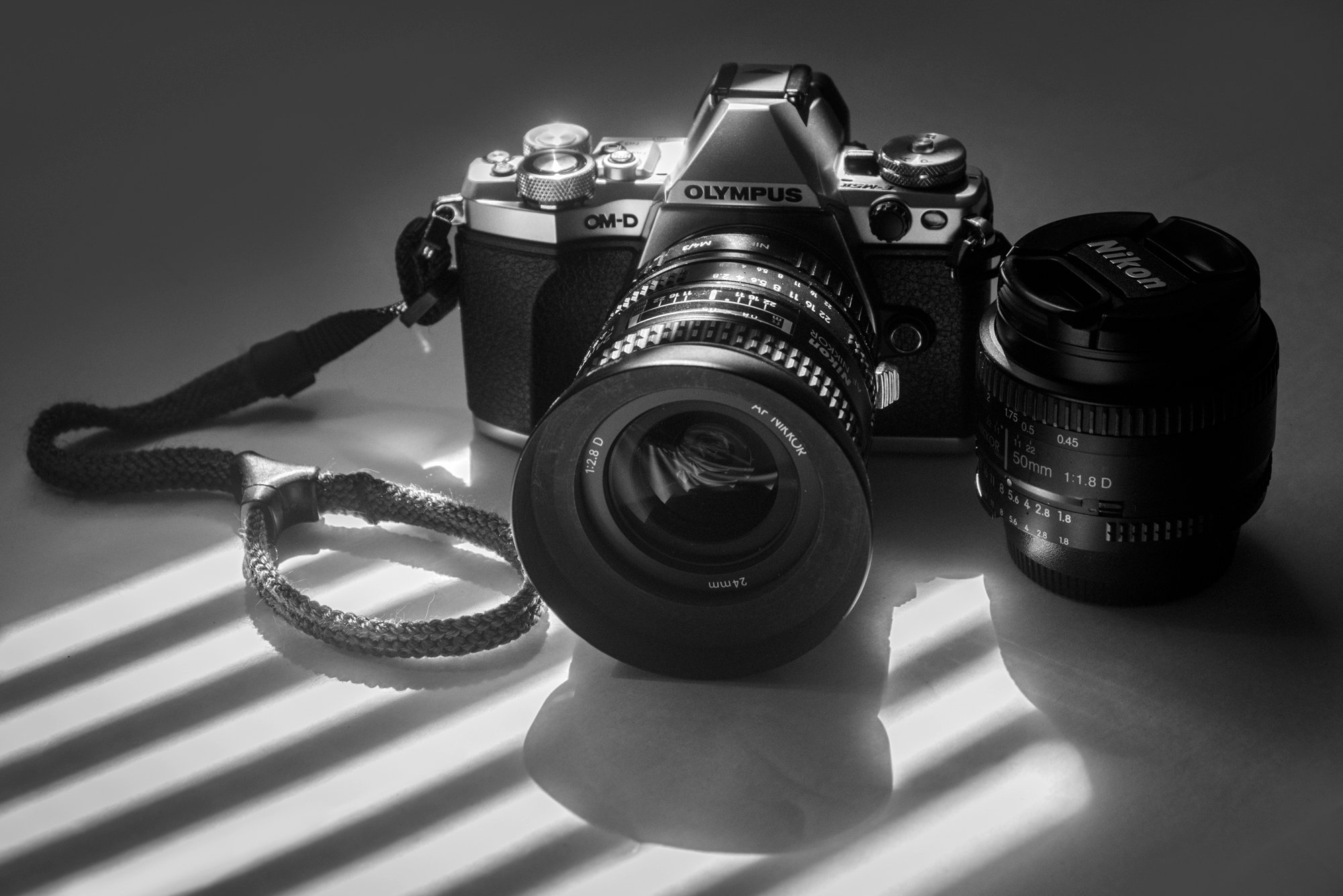
Our friend's puppy, Kamea in monochrome.
I bought this camera planning to use prime lenses - I have four of them: 24mm, 50mm, 85mm, and 105mm. Two things happen when attaching a Nikon prime lens with adapter - the lens becomes manual focus only, and the focal length is effectively doubled due to the camera's 2x crop factor. The 24mm lens attached to the camera in the first shot becomes a 48mm, which is a perfect standard lens. The 2x crop factor also applies to DOF, and a f/2.8 lens will have roughly the same DOF as a f/4.0 lens. You really want fast primes for micro 4/3. F/1.4 lenses and faster are the best - more light really helps that little sensor perform best, and helps you keep the ISO down.
Kamea was captured with the 50mm f/1.8 prime - which now works like a 100mm portrait lens.

Manual focus is fairly easy if you enable "focus peaking" which casts a red fringe around the areas of the photo which are in focus. At times I found it difficult to see the red halo, but I soon discovered an alternate method which is quite remarkable. More on this in a moment.
.jpg)
The camera does not detect the presence of the adapted lens and does not record any details about focal length or aperture.
Moonlight on the water. EXIF Summary: 1/6 sec ISO400. <--- that's all that gets recorded.
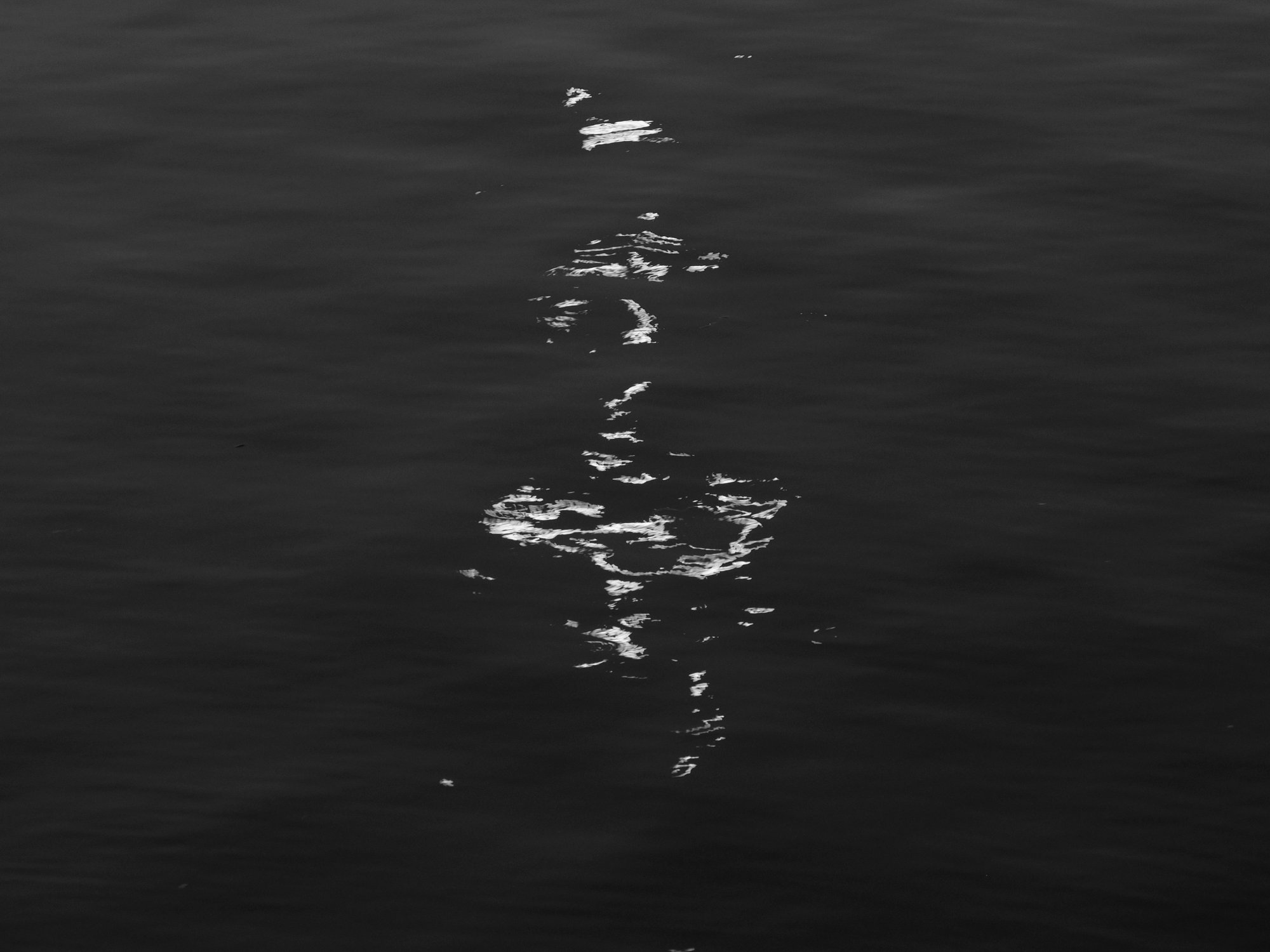
It was up to me to remember the details: Nikon 85mm, f/1.8. By the way, notice: one sixth second, handheld at 170mm full frame equivalent. The in-body image stabilization works like magic with the Nikon prime lenses, but you do have to go into a menu and enter the focal length of the lens and remember to do it again when you change lenses. Today I found the stabilization was acting weird and realized I was using my 24mm but the camera was still set for the 85mm. (Go to Menu, *C, Image Stabilizer to make these changes.) None of this applies to native Olympus or Panasonic micro 4/3 lenses which do autofocus properly - this is all about using adapted lenses. You could do the same thing using an adapter for Canon lenses if that's what you happen to own.
50mm f/1.8. See, it is possible to get background blur with the smaller M4/3 sensor.
_edit.jpg)
Focus by "cartoon!" I have not seen this mentioned anywhere else.
At times I found the red focus peaking very difficult to see. Try it on a red flower for example! It is far easier to do manual focusing using an Art Filter called Keyline II as shown in the next few shots. (Select Art on the mode dial, then Keyline II.) This cartoon-like image is what I saw in the viewfinder. Rotating the focus ring shows or changes the area of the image which is in focus and this can be seen by the level of detail. Compare the details on the windshield of the closest motorcycle to that of the windshield of the 2nd bike, and then see the level of detail on the stop sign. What you see are depth-of-field effects, with the foreground in focus and the background soft and out of focus. You could also throw the foreground out of focus and make the background sharp, and this will be evident in the levels of detail seen throughout the photo. More detail indicates the in-focus areas of the image.
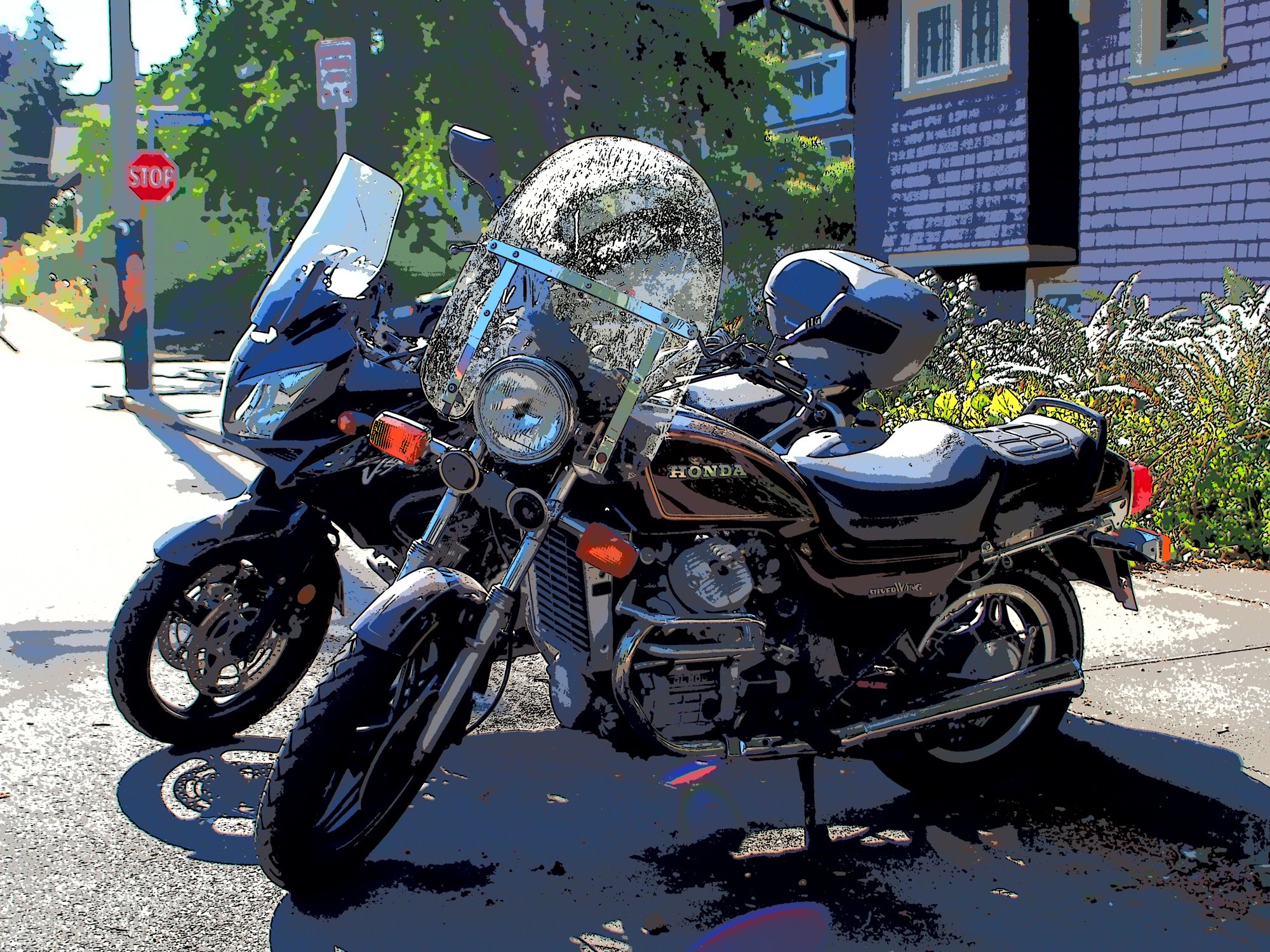
Here's a more extreme example. The foreground is in focus... where's the background?
Part of the joy of mirrorless cameras is using fast prime lenses for shallow depth-of-field effects - and then really seeing the effect through the viewfinder in a way that you cannot do on a DSLR.
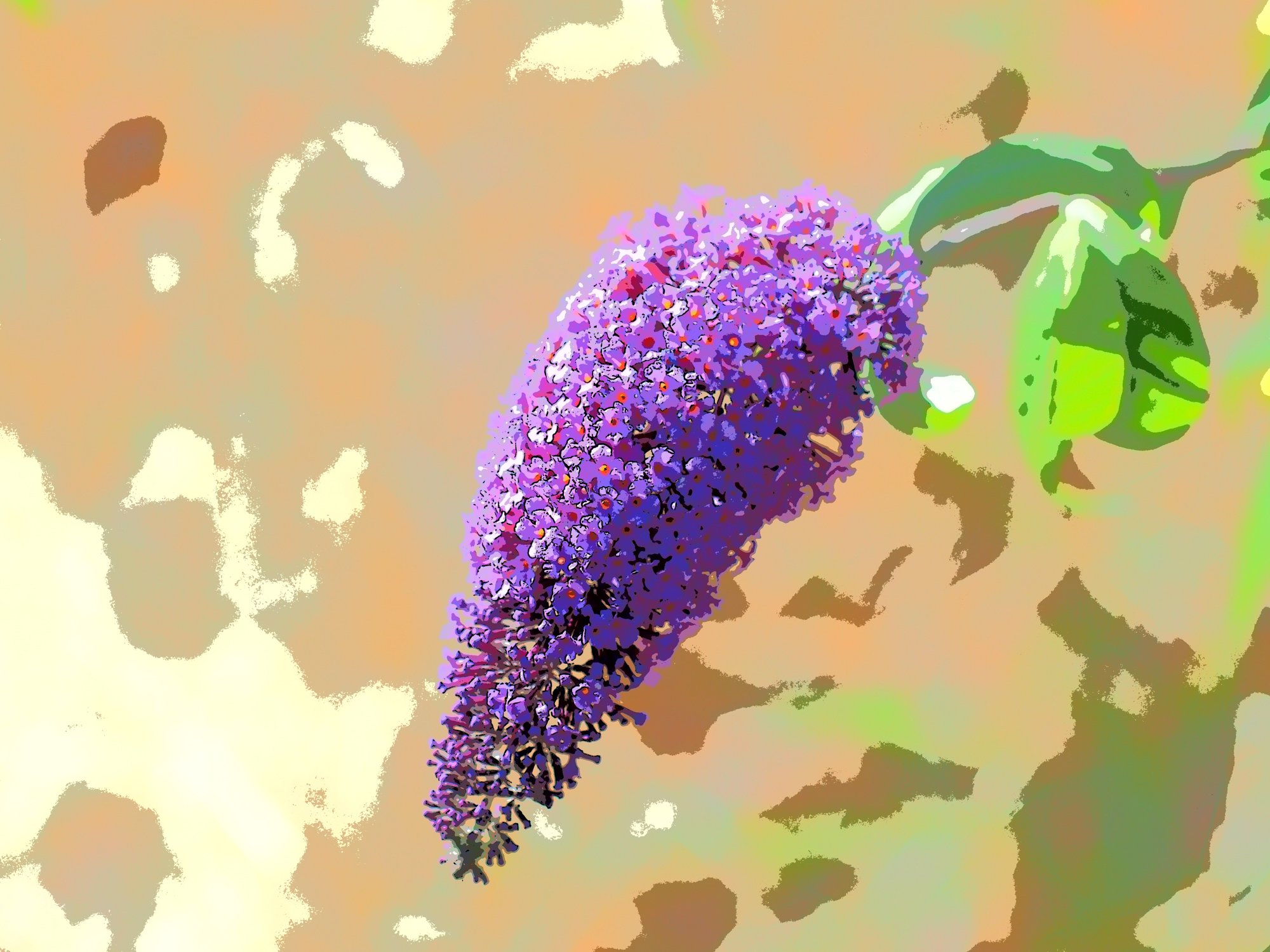
Stop! I hate so-called "Artfilters". I'm a photographer!
Fair enough, although I do quite like this effect myself. In fact, it's exactly the look I used to spend hours trying to create using various software packages on my Macbook. The point is you can save both the jpg and RAW images. You can even bracket several different filters and also save the RAW file... or, having only the RAW file, you could apply these effects after the fact using the Olympus Viewer 3 software which comes with the camera.
Here's what I saw through the viewfinder, focusing on the rust on the hood.
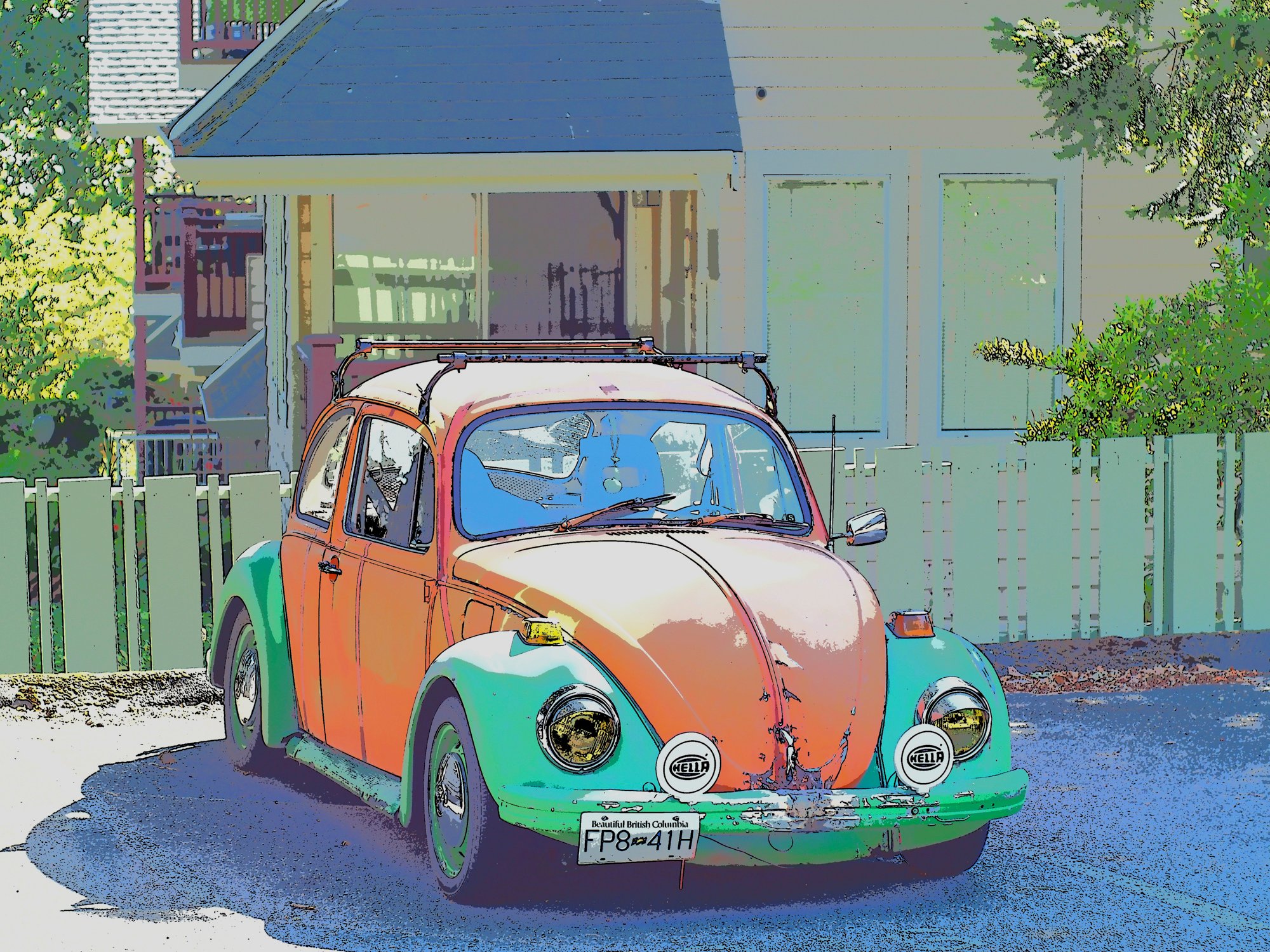
The RAW image - look Ma, no cartoon!
The RAW image is a bit overexposed - but easily adjusted. One of my few complaints about the camera is how easy it is to move the exposure compensation dial by mistake. I am forever over or underexposing shots... unless of course, I remember to look because it's all right there in the viewfinder. I just have to slow down and check what I'm doing. Thoughtful photography is far more rewarding than "spray and pray" which I often did with my DSLR.
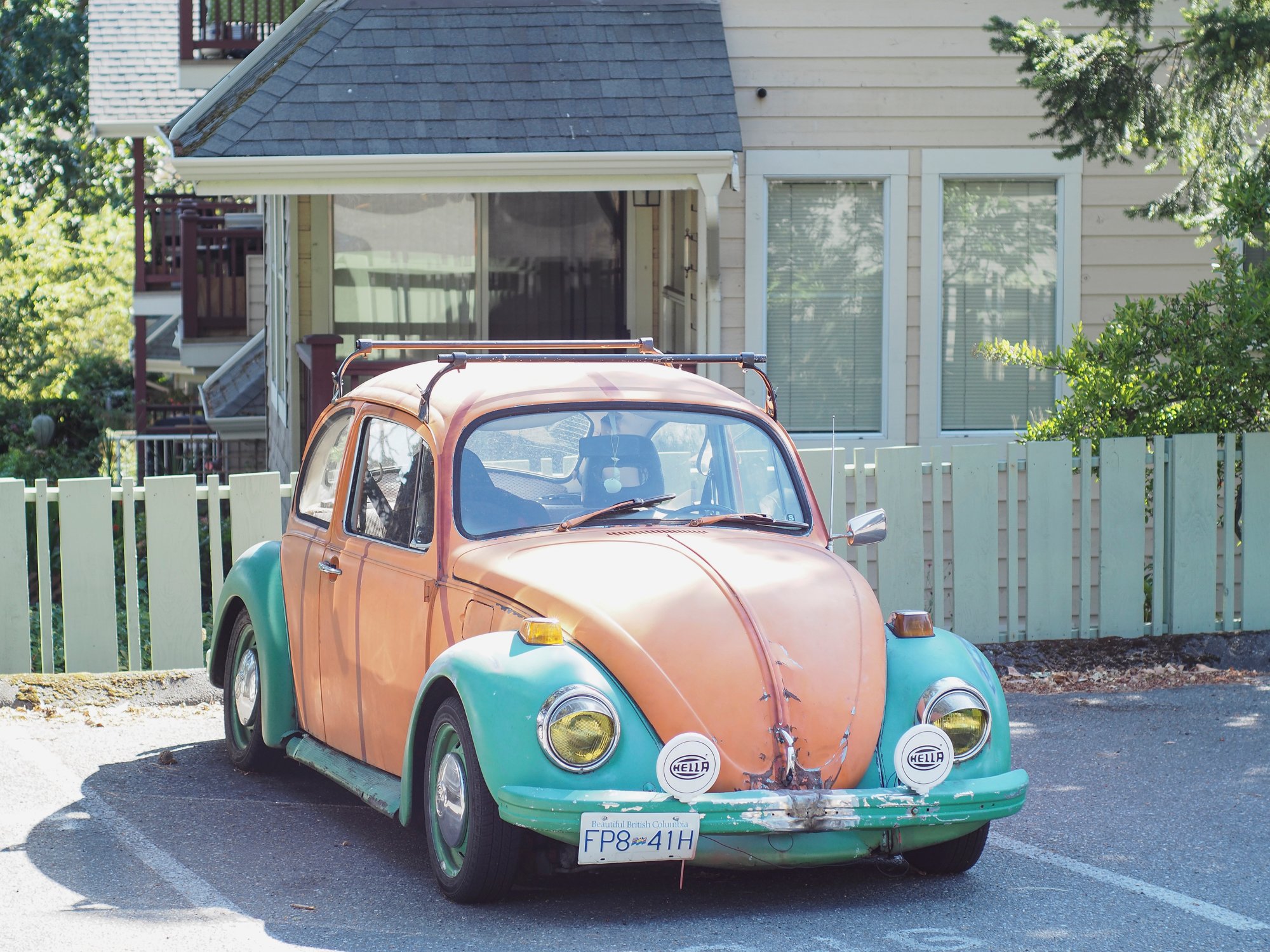
One more "glamour" shot of my new gear...
I'm hanging on to some of my Nikon gear for now. The primes lenses can be used on both camera bodies. My D750 full frame Nikon has a very high shutter count, and that would make it hard to sell. My plan, for now, is to keep that camera and my Tamron 150-600mm lens for birds, wildlife and sports. I think everything else can be done on the Olympus including street, macro, portraits, etc. This camera is "only" 16 Mega Pixels, so there is not a lot of room for cropping, and you will want to get the image right in camera. There is a hi-resolution mode which can produce 40 Mega Pixel images by moving the camera sensor a half pixel at a time in each of eight directions and then combining the 8 shots into one image. I haven't tried this yet, and the camera will need to be on a tripod.
This mirrorless camera is a blast to shoot and I'm having so much fun! I truly feel revitalized using this new camera. It's tiny and light, and a real treat to use. A true photographers camera.
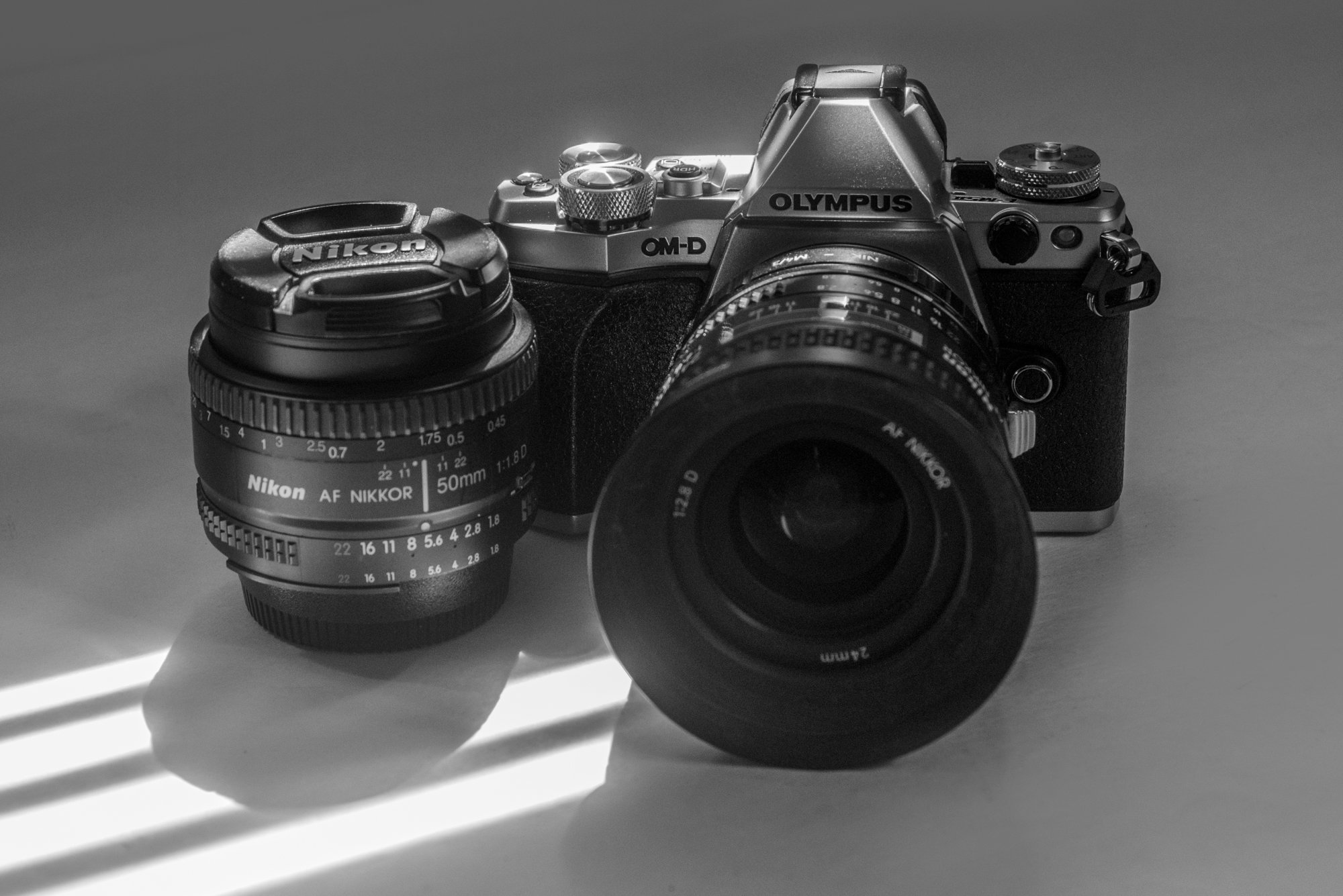
I'll be back with more about all this later. This is just my first couple of days with this new camera system. When all my used stuff sells I should be about a thousand dollars ahead! How great is that?
Finally, just because I like making these things, here's a gif view of the new Johnson St. lift bridge in action, photographed last night in Victoria, BC.
Oly Em-5 Mk II and Nikon 85mm, f/1.8
.gif)
These images were all shot last night and today for #monochromemonday hosted by @old-guy-photos.
